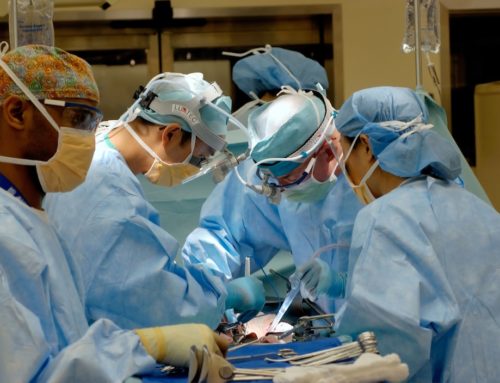About 1.62 million instrumented spinal procedures are performed in the US each year. About 352,000 of these procedures interbody fusions.
If you have a spinal disorder that’s making movement painful, you might want to consider a spinal fusion procedure as well. What exactly does this spinal surgery entail? Read on to find out!
After reviewing this guide, you can speak with a back and spine doctor to determine if this procedure is right for you.
What Is Spinal Fusion?
First, let’s cover the basics. What is spinal fusion?
This surgical procedure is necessary when two or more vertebrae are joined into one solid bone without space between them. Your vertebrae are the interlocking bones along your spine.
The procedure is also called:
- Anterior spinal fusion
- Posterior spinal fusion
- Arthrodesis
- Vertebral interbody fusion
During the spinal surgery, your surgeon will use the extra bone to fill the space that’s usually between two vertebrae. After the bone heals, there won’t be space between the vertebrae anymore.
Why It’s Done
Your doctor might recommend this form of spinal surgery to relieve symptoms or treat an underlying spinal problem. For example, they might recommend this surgery if you have:
- Scoliosis
- Spondylolisthesis
- Kyphosis
- Spinal weakness
- Spinal instability
- Herniated discs
- Tumors
- Degenerative disc disease
- Fractured vertebrae
- Spinal stenosis
Spinal fusion can help correct spinal deformities or restore stability in your spine due to an underlying condition. It can also stabilize your spine after the removal of a damaged disc.
About 540 million people worldwide are already struggling with back pain. You’re not alone. Correcting a deformity or improving the spine’s stability could ease any pain symptoms you’re experiencing.
What to Expect
You’ll remain unconscious under general anesthesia during the procedure. Your surgeon might choose between techniques.
Usually, the procedure involves making an incision at either the:
- Neck or back, directly over your spine
- On either side of the spine
- In the abdomen or throat
Bone grafts are used to fuse the vertebrae together. Your surgeon might use a bone bank or remove a small piece of your pelvic bone for the procedure.
Then, they’ll fuse the vertebrae together permanently by placing the bone graft between the two vertebrae. They might use metal plates, screws, or rods to keep the vertebrae together while you heal.
Afterward, you could experience some redness, tenderness, or swelling. Let your doctor know if you experience wound drainage, a fever, or shaking chills.
It can take several months for the bones to fuse together. During this time, you might need to wear a brace.
Complications
While it’s generally a safe procedure, all procedures carry potential risks and complications. Potential complications for spinal fusion include:
- Blood clots
- Bleeding
- Poor wound healing
- Infection
- Pain at the site
- Injury to blood vessels or nerves
Make sure to find an experienced, licensed back and spine doctor before scheduling your procedure. They can minimize these risks.
Schedule Your Spinal Fusion Procedure Today
The spinal fusion procedure could help remedy any spinal weakness you’re experiencing, which could reduce pain symptoms. Consider scheduling an appointment with a back and spine doctor.
With their help, you can determine if this procedure suits your needs.
Eager to get started?
Contact us today to learn more.






